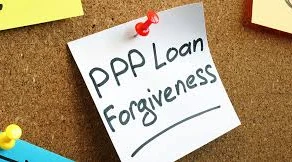The SBA is expected to open up their portal to lenders to begin accepting PPP forgiveness applications. As the portal opens up the country waits on Congress to work through a Phase 4 stimulus plan related to the COVID pandemic. Tied up in the plan appears to be potential blanket forgiveness for the vast majority of PPP loans.
I’ve written before about various bills that include blanket forgiveness provisions, generally for loans of $150,000 or less. If blanket forgiveness is approved, the number of hours that borrowers, lenders, and financial consultants will spend on PPP forgiveness will be reduced dramatically. It is hard to envision blanket forgiveness not passing given the support it has from hundreds of trade organizations and bipartisan support in Congress.
With the SBA portal set to open, you are now faced with a decision – apply or wait to apply for forgiveness.
I think you should wait. In my view, the number of reasons to wait far outweigh the reasons to apply at the front of the line.
1. There is no reason to believe that the vast majority of PPP loans won’t be fully forgiven, with the only thing left for many borrowers to do is certify the PPP proceeds were used appropriately.
2. The administrative burden may be significantly less based on legislation that is being discussed today:
-
The majority of borrowers may be allowed to simply submit a 1-page certification for forgiveness.
-
Another large group of borrowers may be allowed to submit the application form without supplying their lender any supporting documentation.
3. The deadline to apply for forgiveness is 10 months from the last day of your covered period. This deadline is important for two main reasons:
-
The borrower is not responsible for any PPP loan payments until the lender has received funds from the SBA (Note: interest accrues from the loan disbursement date).
-
As of today, expenses that end up forgiven will be considered nondeductible by the IRS. Have you talked to your tax professional and planned for this possibility? It may be a better financial outcome for you to take a low interest PPP loan versus increasing your 2020 tax liability. Tax planning is key.
4. Outstanding questions and much needed clarification on the existing PPP Forgiveness applications continue to exist.
5. Borrowers haven’t exhausted the full 24-week covered period. Using the entire period will only help you achieve full forgiveness due to the continued spend on eligible expenses.
6. Many lenders are not ready to electronically process forgiveness applications.
I know this is just another frustration in a year of frustration. The prudent move is to be patient and wait for the government to get through this next round of stimulus before you make any decisions, especially if that decision requires you to pay a third-party to help you through this process.
We will continue to update you as more comes out of D.C.




